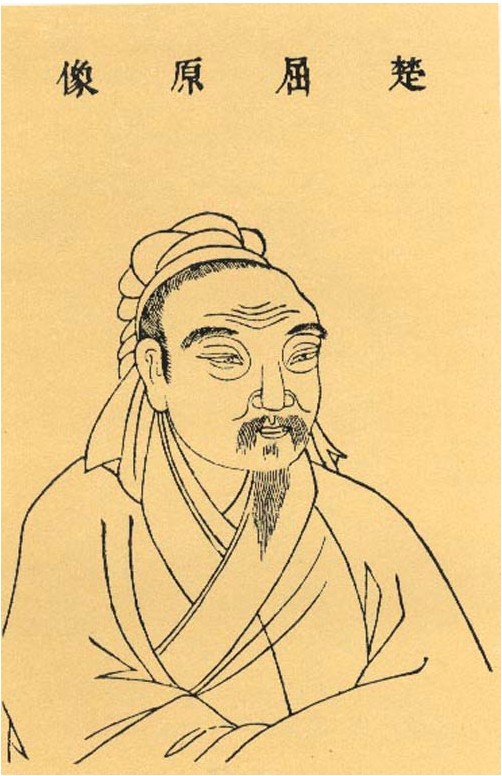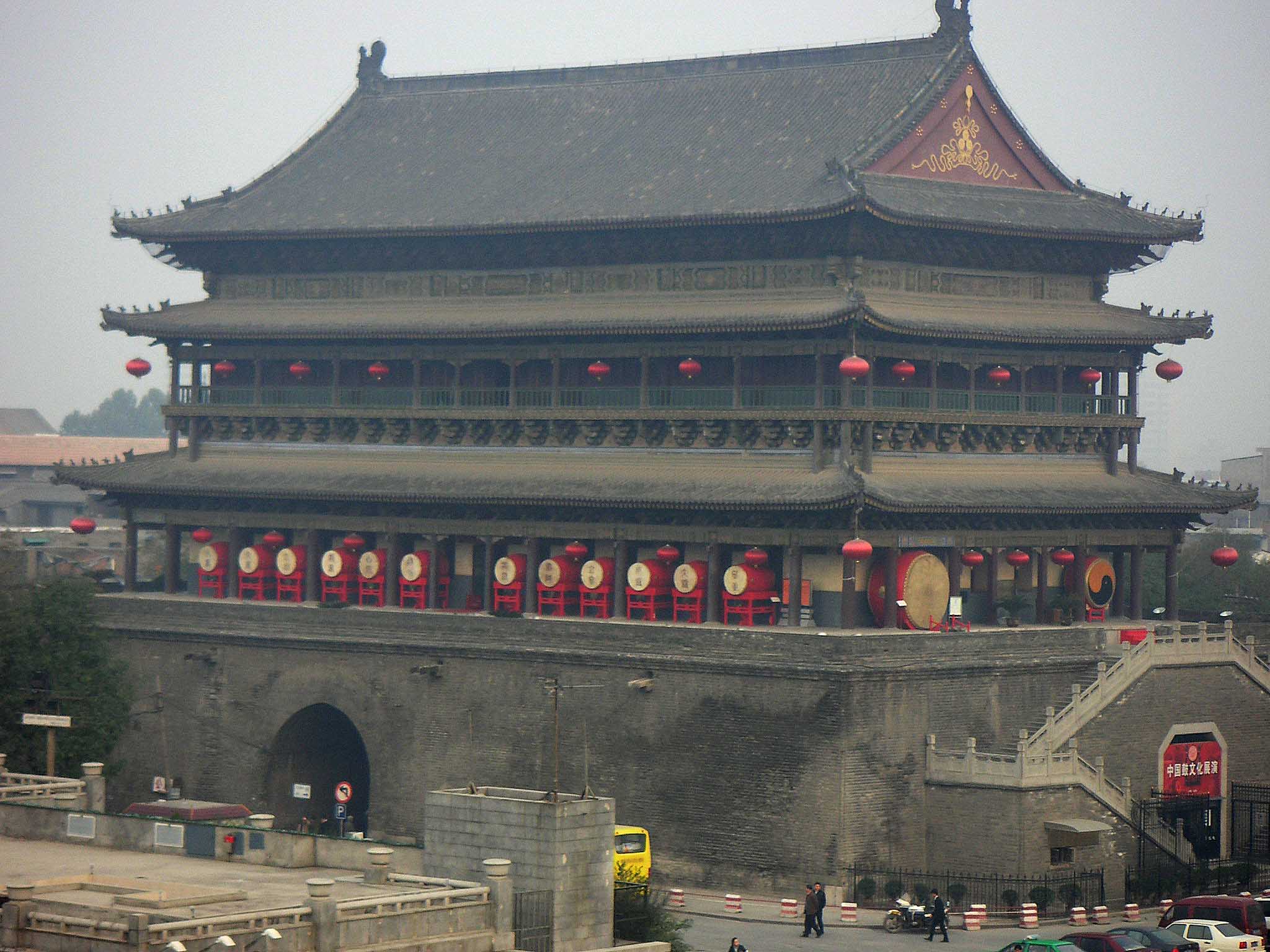|
Wang Bao
Wang Bao ( 84 53 BCE), courtesy name Ziyuan (子淵), was a Chinese poet during the Western Han Dynasty. He was well versed in the Classical Chinese poetry tradition. He was involved in the ''Chu Ci'' poetry revival which took place in the second part of Emperor Xuan's reign, and which led to the creation of poetry that would eventually form part of the early poetry anthology by the same name, compiled by Wang Yi. ''Chu Ci'' means "literature of Chu", Chu being the area of a former independent kingdom, located in what was from the viewpoint of the Han Dynasty the south of China. Wang Bao is particularly known today as the author of the ''Chu Ci'' section " Nine Regrets". His poetry was not as famous as "''Li Sao''" or "Heavenly Questions". Indeed sometimes Qu Yuan has been credited as the author of his poetry (as have all the ''Chu Ci'' contents) . Wang Bao's works were included in one of the two major early anthologies of Chinese poetry which has helped to secure Wang Bao's lega ... [...More Info...] [...Related Items...] OR: [Wikipedia] [Google] [Baidu] |
Wang (surname)
Wang () is the pinyin romanization of the common Chinese surnames (''Wáng'') and (''Wāng''). It is currently the most common surname in mainland China, as well as the most common surname in the world, with more than 107 million worldwide. ublic Security Bureau Statistics: 'Wang' Found China's #1 'Big Family', Includes 92.88m People" 24 Apr 2007. Accessed 27 Mar 2012. Wáng () was listed as 8th on the famous list of the '' [...More Info...] [...Related Items...] OR: [Wikipedia] [Google] [Baidu] |
Xianyang
Xianyang () is a prefecture-level city in central Shaanxi province, situated on the Wei River a few kilometers upstream (west) from the provincial capital of Xi'an. Once the capital of the Qin dynasty, it is now integrated into the Xi'an metropolitan area, one of the main urban agglomerations in northwestern China, with more than 7.17 million inhabitants, its built-up area made of 2 urban districts (Qindu and Weicheng) was 945,420 inhabitants at the 2010 census. It has a total area of . Xianyang is the seat of the Xi'an Xianyang International Airport, the main airport serving Xi'an and the largest airport in Northwest China, and one of the top 40th-busiest airports in the world. Xianyang is one of the top 500 cities in the world by scientific research outputs, as tracked by the Nature Index. It is home to the main campus of Northwest A&F University (NWAFU), one of the world's top universities in agriculture science related fields, and a member of " Project 985" club w ... [...More Info...] [...Related Items...] OR: [Wikipedia] [Google] [Baidu] |
Shu (state)
Shu () was an ancient Ancient Chinese states, state in what is now Sichuan Province. It was based on the Chengdu Plain, in the western Sichuan basin with some extension northeast to the upper Hanshui, Han River valley. To the east was Ba (state), the Ba tribal confederation. Further east down the Han and Yangtze rivers was the Chu (state), State of Chu. To the north over the Qinling Mountains was the Qin (state), State of Qin. To the west and south were tribal peoples of little military power. This independent Shu state was conquered by the state of Qin (state), Qin in 316 BCE. Recent archaeological discoveries at Sanxingdui and Jinsha (archaeological site), Jinsha thought to be sites of Shu culture indicate the presence of a unique civilization in this region before the Qin conquest. In subsequent periods of Chinese history the Sichuan area continued to be referred to as Shu after this ancient state, and later states founded in the same region were also called Shu. Sanxingdui ... [...More Info...] [...Related Items...] OR: [Wikipedia] [Google] [Baidu] |
List Of Chuci Contents
This is a list of the sections and individual pieces contained within the ancient poetry anthology ''Chu Ci'' (), also known as ''Songs of the South'' or ''Songs of Chu'', which is an anthology of Classical Chinese poetry verse traditionally attributed to Qu Yuan and Song Yu from the Warring States period, though about half of the poems seem to have been composed several centuries later, during the Han Dynasty.Hawkes, David. Ch'u Tz'u: ''Songs of the South, an Ancient Chinese Anthology''. (Oxford: Clarendon Press, 1959), 28. The traditional version of the ''Chu Ci'' contains 17 major sections, and was edited by Wang Yi (), a 2nd-century AD librarian who served under Emperor Shun of Han. The ''Chu Ci'' and the ''Shi Jing'' together constitute the chief sources of pre-Qin dynasty Chinese verse. "Encountering Sorrow" "Li Sao" () is one of the most famous of the works contained in the ''Chu Ci'': it mainly is upon a theme of seemingly autobiographical material about the relationship ... [...More Info...] [...Related Items...] OR: [Wikipedia] [Google] [Baidu] |
Chu Ci
The ''Chu ci'', variously translated as ''Verses of Chu,'' ''Songs of Chu'', or ''Elegies of Chu'', is an ancient anthology of Chinese poetry including works traditionally attributed mainly to Qu Yuan and Song Yu from the Warring States period (ended 221 BC), and also a large number of works composed several centuries later, during the Han dynasty.Hawkes, David. Ch'u Tz'u: ''Songs of the South, an Ancient Chinese Anthology''. (Oxford: Clarendon Press, 1959), 28. The traditional version of the ''Chu ci'' contains 17 major sections, anthologized with its current contents by Wang Yi, a 2nd-century AD librarian who served under Emperor Shun of Han. The early (pre-Qin dynasty) Classical Chinese poetry is mainly known through the two anthologies the ''Chu ci'' and the '' Shi jing'' (''Classic of Poetry'' or ''Book of Songs''). Background ''Chu ci'' was named after a form of poetry that originated in the State of Chu, which was located in what is now central China, but was t ... [...More Info...] [...Related Items...] OR: [Wikipedia] [Google] [Baidu] |
Fu (poetry)
''Fu'' (), often translated "rhapsody" or "poetic exposition", is a form of Chinese rhymed prose that was the dominant literary form during the Han dynasty (206AD220). ''Fu'' are intermediary pieces between poetry and prose in which a place, object, feeling, or other subject is described and rhapsodized in exhaustive detail and from as many angles as possible. Features characteristic of ''fu'' include alternating rhyme and prose, varying line length, close alliteration, onomatopoeia, loose parallelism, and extensive cataloging of their topics. ''Fu'' composers usually strove to use as wide a vocabulary as possible, and classical ''fu'' often contain many rare and archaic Chinese words. They were not sung like songs, but were recited or chanted. The ''fu'' genre came into being around the 3rd to 2nd centuries BC and continued to be regularly used into the Song dynasty (9601279). ''Fu'' were used as grand praises for the imperial courts, palaces, and cities, but were also used ... [...More Info...] [...Related Items...] OR: [Wikipedia] [Google] [Baidu] |
Envoi
Envoi or envoy in poetry is used to describe: * A short stanza at the end of a poem such as a ballad, used either to address an imagined or actual person or to comment on the preceding body of the poem. * A dedicatory poem about sending the book out to readers, a postscript."envoy, n.1". OED Online. September 2019. Oxford University Press. https://www-oed-com.ezp.lib.unimelb.edu.au/view/Entry/63102?redirectedFrom=envoi (accessed October 31, 2019). * Any poem of farewell, including a farewell to life. The word ''envoy'' or ''l'envoy'' comes from the Old French, where it means ' hesending forth'. Originally it was a stanza at the end of a longer poem, which included a dedication to a patron or individual, similar to a tornada. More recent examples are dedicatory poems as part of a collection, or an individual poem about farewell or moving on. Envoi is both a type of poem, and is often used as a title. Form The envoi is relatively fluid in form. In ballades and chant royal, env ... [...More Info...] [...Related Items...] OR: [Wikipedia] [Google] [Baidu] |
Shijing
The ''Classic of Poetry'', also ''Shijing'' or ''Shih-ching'', translated variously as the ''Book of Songs'', ''Book of Odes'', or simply known as the ''Odes'' or ''Poetry'' (; ''Shī''), is the oldest existing collection of Chinese poetry, comprising 305 works dating from the 11th to 7th centuries BCE. It is one of the " Five Classics" traditionally said to have been compiled by Confucius, and has been studied and memorized by scholars in China and neighboring countries over two millennia. It is also a rich source of '' chengyu'' (four-character classical idioms) that are still a part of learned discourse and even everyday language in modern Chinese. Since the Qing dynasty, its rhyme patterns have also been analysed in the study of Old Chinese phonology. Name Early references refer to the anthology as the ''300 Poems'' ('' shi''). ''The Odes'' first became known as a ''jīng'', or a "classic book", in the canonical sense, as part of the Han Dynasty official adoption of C ... [...More Info...] [...Related Items...] OR: [Wikipedia] [Google] [Baidu] |
Liu Xiang (scholar)
Liu Xiang (77–6BCE), born Liu Gengsheng and bearing the courtesy name Zizheng, was a Chinese astronomer, historian, poet, politician, librarian, and writer of the Western Han Dynasty. Among his polymathic scholarly specialties were history, literary bibliography, and astronomy. He is particularly well known for his bibliographic work in cataloging and editing the extensive imperial library. Life Liu Gengsheng was born in Xuzhou. Being a distant relative of Liu Bang, the founder of the Han dynasty, he was thus a member of the ruling dynastic clan (the Liu family). Liu Xiang's father ranked as a marquess. Liu Xiang's son, Liu Xin, would continue the scholarly tradition of his father and his relative Liu An (the Prince of Huainan). By the beginning of Han Yuandi's reign, Liu Xiang was a member of a group of Confucian officials, including Xiao Wangzhi, who wished to limit the power of the emperor's female family members relatives' clans, the Shi and the Xu. He ended up on th ... [...More Info...] [...Related Items...] OR: [Wikipedia] [Google] [Baidu] |
Sichuan Basin
The Sichuan Basin (), formerly transliterated as the Szechwan Basin, sometimes called the Red Basin, is a lowland region in southwestern China. It is surrounded by mountains on all sides and is drained by the upper Yangtze River and its tributaries. The basin is anchored by Chengdu, the capital of Sichuan province, in the west, and the direct-administered municipality of Chongqing in the east. Due to its relative flatness and fertile soils, it is able to support a population of more than 100 million. In addition to being a dominant geographical feature of the region, the Sichuan Basin also constitutes a cultural sphere that is distinguished by its own unique customs, cuisine and dialects. It is famous for its rice cultivation and is often considered the breadbasket of China. In the 21st century its industrial base is expanding with growth in the high-tech, aerospace, and petroleum industries. Geography The Sichuan Basin is an expansive lowland region in China that is sur ... [...More Info...] [...Related Items...] OR: [Wikipedia] [Google] [Baidu] |
Major National Historical And Cultural Sites (Shaanxi) ...
This list is of Major Sites Protected for their Historical and Cultural Value at the National Level in the Province of Shaanxi, People's Republic of China. See also * Principles for the Conservation of Heritage Sites in China References {{National Heritage Sites in China, state=expanded Shaanxi Shaanxi (alternatively Shensi, see #Name, § Name) is a landlocked Provinces of China, province of China. Officially part of Northwest China, it borders the province-level divisions of Shanxi (NE, E), Henan (E), Hubei (SE), Chongqing (S), Sichu ... [...More Info...] [...Related Items...] OR: [Wikipedia] [Google] [Baidu] |
.jpg)




